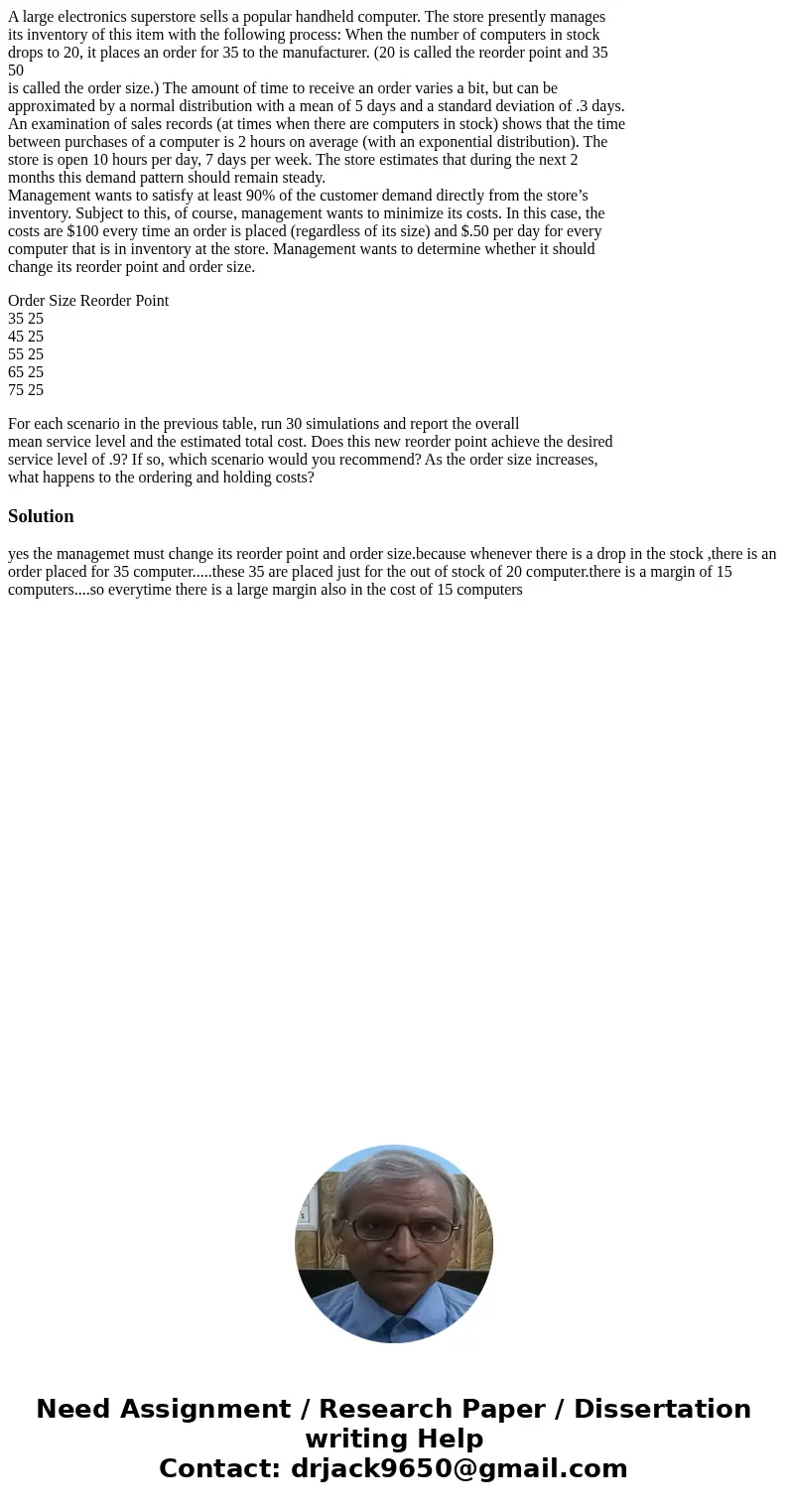A large electronics superstore sells a popular handheld comp
A large electronics superstore sells a popular handheld computer. The store presently manages
its inventory of this item with the following process: When the number of computers in stock
drops to 20, it places an order for 35 to the manufacturer. (20 is called the reorder point and 35
50
is called the order size.) The amount of time to receive an order varies a bit, but can be
approximated by a normal distribution with a mean of 5 days and a standard deviation of .3 days.
An examination of sales records (at times when there are computers in stock) shows that the time
between purchases of a computer is 2 hours on average (with an exponential distribution). The
store is open 10 hours per day, 7 days per week. The store estimates that during the next 2
months this demand pattern should remain steady.
Management wants to satisfy at least 90% of the customer demand directly from the store’s
inventory. Subject to this, of course, management wants to minimize its costs. In this case, the
costs are $100 every time an order is placed (regardless of its size) and $.50 per day for every
computer that is in inventory at the store. Management wants to determine whether it should
change its reorder point and order size.
Order Size Reorder Point
35 25
45 25
55 25
65 25
75 25
For each scenario in the previous table, run 30 simulations and report the overall
mean service level and the estimated total cost. Does this new reorder point achieve the desired
service level of .9? If so, which scenario would you recommend? As the order size increases,
what happens to the ordering and holding costs?
Solution
yes the managemet must change its reorder point and order size.because whenever there is a drop in the stock ,there is an order placed for 35 computer.....these 35 are placed just for the out of stock of 20 computer.there is a margin of 15 computers....so everytime there is a large margin also in the cost of 15 computers

 Homework Sourse
Homework Sourse